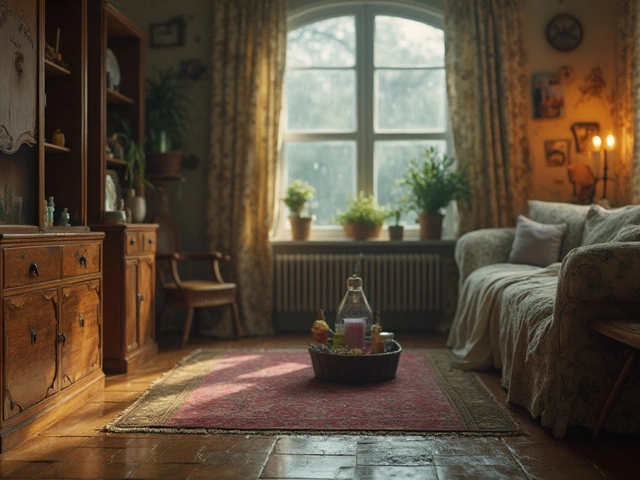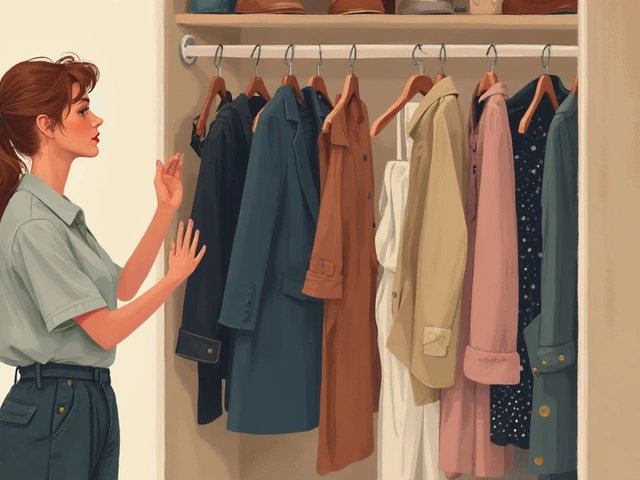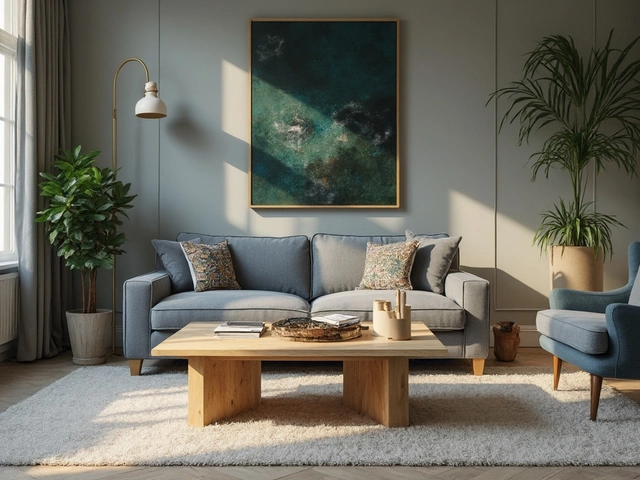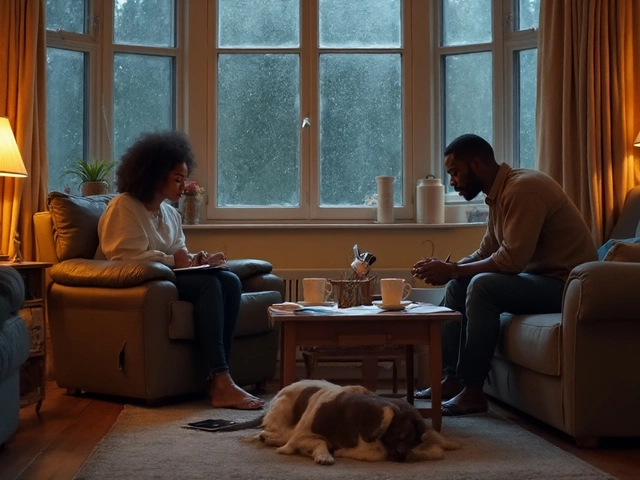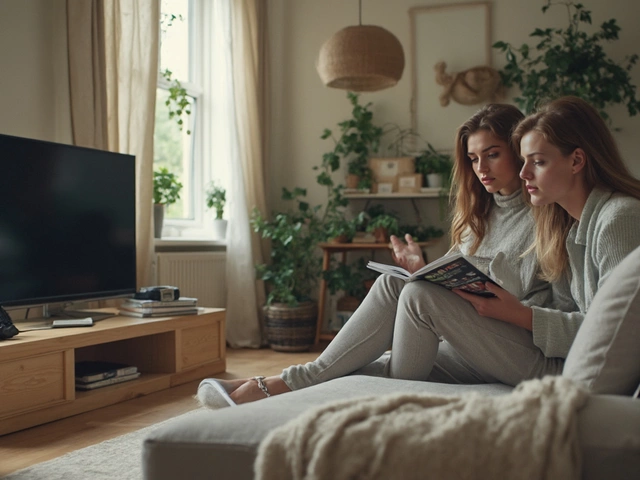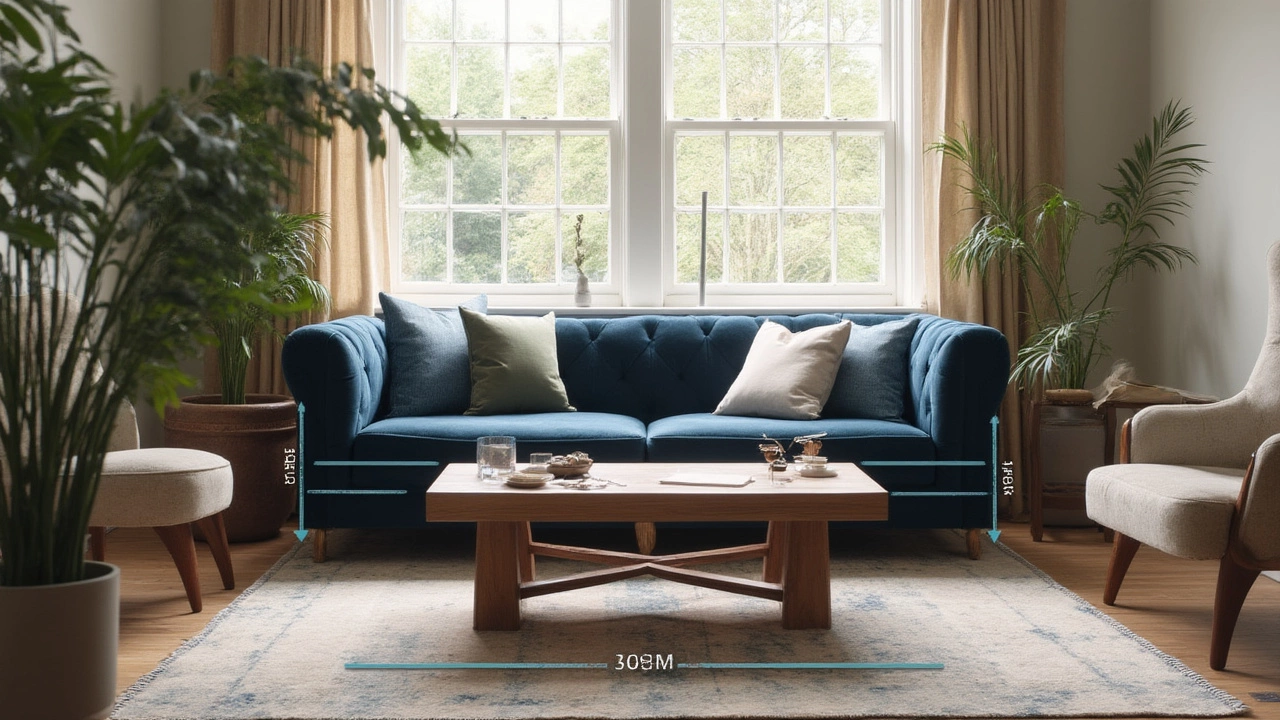 26
Jul,2025
26
Jul,2025
Ever stubbed your toe trying to squeeze past a coffee table that’s way too big, or felt your living room looked awkward because your coffee table was dwarfed by your hulking couch? The struggle is real. Sizing a coffee table compared to your couch isn’t just about style—it’s that sweet spot between comfort, function, and looks. Turns out, there’s some real science and lots of practical know-how behind it. I learned the hard way: one night, navigating our dark living room, I took down a stack of magazines with an ill-placed, oversized coffee table. That was the last straw for me and Lucy. We dove into what actually makes a living room work, right down to the numbers, so you won’t have to play the guessing game with your own space.
The Golden Rules: Measuring Up Your Coffee Table
Most people underestimate how much coffee table size affects the whole mood of a room. The standard advice gets thrown around a lot—"just pick what looks good to you"—but that’s a recipe for clutter or a sad, unused surface. Instead, let’s talk hard numbers. Designers and furniture makers have honed this stuff over decades. The key guideline you’ll hear just about everywhere: your coffee table should be about two-thirds the length of your sofa. So, if you’re rocking a standard 90-inch couch, a coffee table that’s 54 to 60 inches long is the ideal. Too short, and it feels like an afterthought. Too long, and suddenly the room shrinks, and movement is a pain.
Height matters, too. Rule of thumb: your coffee table should be the same height or within one to two inches lower than your couch seat. Most sofas have a seat height of 17 to 19 inches, so that’s your starting range. If you’ve ever tried setting down a drink on a table that’s too low, or had to reach awkwardly because it’s too tall, you already know why this matters. Also, round tables—which are growing in popularity—don’t need to be as long as rectangular ones, but should still be about two-thirds the length of the seating they accompany.
Let’s talk space. You need at least 16 to 18 inches between the edge of your coffee table and the sofa. This lets you walk, stretch out your legs, or scoot the table for game night. Here’s an interesting stat: a recent survey by the American Home Furnishings Association found that 62% of people who bought new coffee tables last year prioritized ease of movement above the table’s color or shape. No one wants to play furniture twister every time someone stands up.
When it comes to depth, most coffee tables fall between 18 and 24 inches. For sectionals or large L-shaped couches, aim for a table depth that lets everyone reach for snacks without a gymnastics routine. As a fun fact: coffee tables in the 1950s used to be an average of 15 inches deep—smaller homes, smaller furniture. Today’s open layouts are bigger, and so are our tables.
| Sofa Length | Ideal Coffee Table Length | Standard Table Height | Recommended Table Depth |
|---|---|---|---|
| 72 inches | 48 inches | 16-18 inches | 18-24 inches |
| 84 inches | 56 inches | 17-19 inches | 18-24 inches |
| 96 inches | 64 inches | 17-19 inches | 20-28 inches |
When you’re shopping or measuring, always picture the flow. Where do people walk? Where will guests perch with drinks (and, yes, maybe feet up…)? Is there space for trays, décor, or the remote you always lose? Maybe this is overthinking it, maybe not. But all it takes is one too-big table to send you down a rabbit hole of "do I even like my living room?" questions.
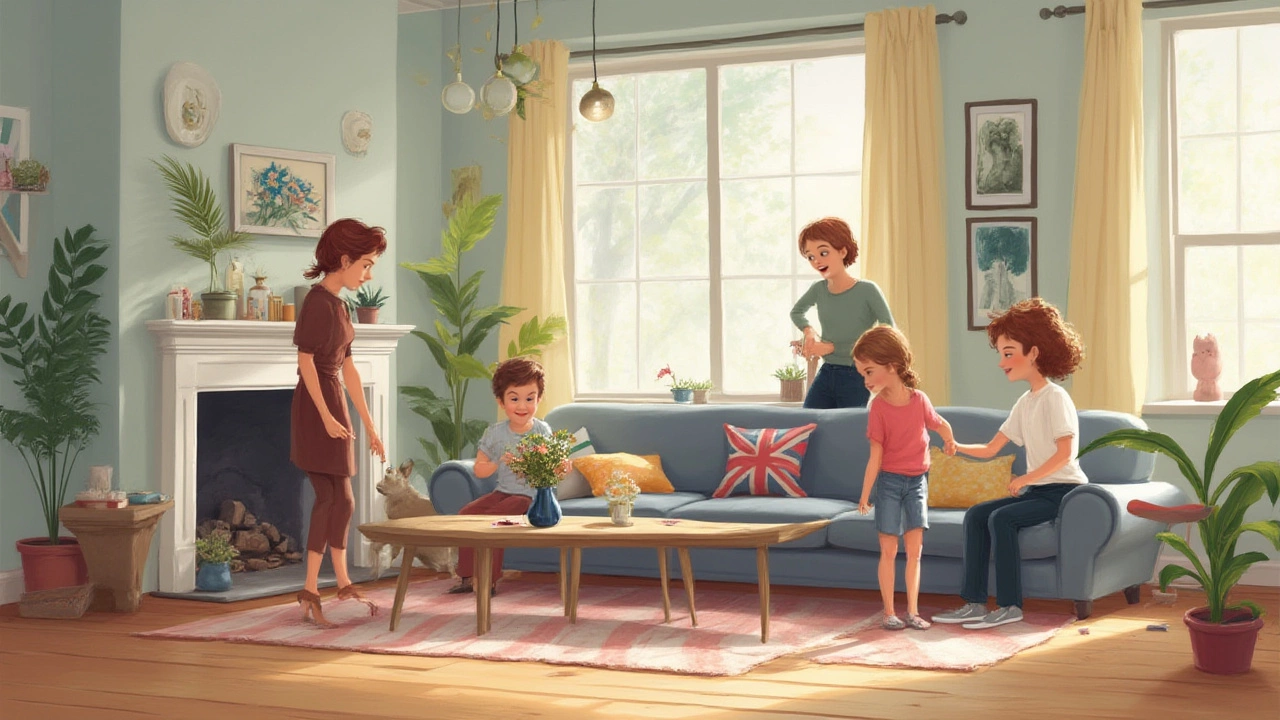
Practical Advice to Nail Your Coffee Table Size
People often buy what’s on sale or what fits their style, but ignoring the room’s vibe leads to regret. For my family, it took trying two different tables before we landed on the right fit. The first looked perfect online—sleek, glass-top, modern—but it overpowered our medium-sized couch. The next felt like a glorified TV tray.
Here’s my cheat sheet for getting it right every time:
- Start with your sofa. Measure length, height, and depth. Take out the measuring tape and don’t eyeball it—trust me, photos lie.
- Crack out painter’s tape. Mark the area on your floor where the coffee table will go. Live with that footprint for a day or two. It’s the easiest way to see if you’ll like the space it takes up (and if you’ll trip over it).
- If you’re working with a sectional or U-shaped couch, a round or oval coffee table usually works best, since it lets everyone get in close without hard corners sticking out.
- Give yourself at least 16 inches between table and sofa. More is fine if your room allows, but don’t shrink it below 14 inches or you’ll feel squeezed.
- If storage is king in your house—think board games or toddler toys—look for tables with lower shelves or hidden compartments, but make sure they aren’t so bulky they crowd the space.
- For super small rooms, consider nesting tables you can separate when needed, or even an ottoman-style coffee table with a tray on top for drinks.
- Don’t forget about rug size. The table and sofa should both sit on the rug, or the coffee table should at least. Otherwise, everything floats weirdly, and your space will feel disconnected.
Lucy loves to move things around every few months, so we found lightweight tables are actually a game-changer. If you like to change your layout for holidays or parties, stay away from heavy stone-topped tables or chunky wood pieces. Another nugget from the pros: if your family eats in the living room (no judgment—we all do sometimes), a slightly higher coffee table can double as a snacking space without the awkward hunch. Tables with rounded corners are safer if you have small kids or clumsy adults (guilty as charged).
Style does matter, too. A skinny-legged table adds airiness and works with plush sofas, while beefier tables give visual balance to large sectionals. You don’t always have to match finishes perfectly; contrasting colors or materials often look way more intentional—think walnut table with a gray sofa.
One more personal tip: before we lock in a layout, I like to set up the living room as if we’re having friends over. That means I look for a table size that fits drinks, snacks, at least one board game, and still has elbow room. Not scientific, but it’s never failed us.
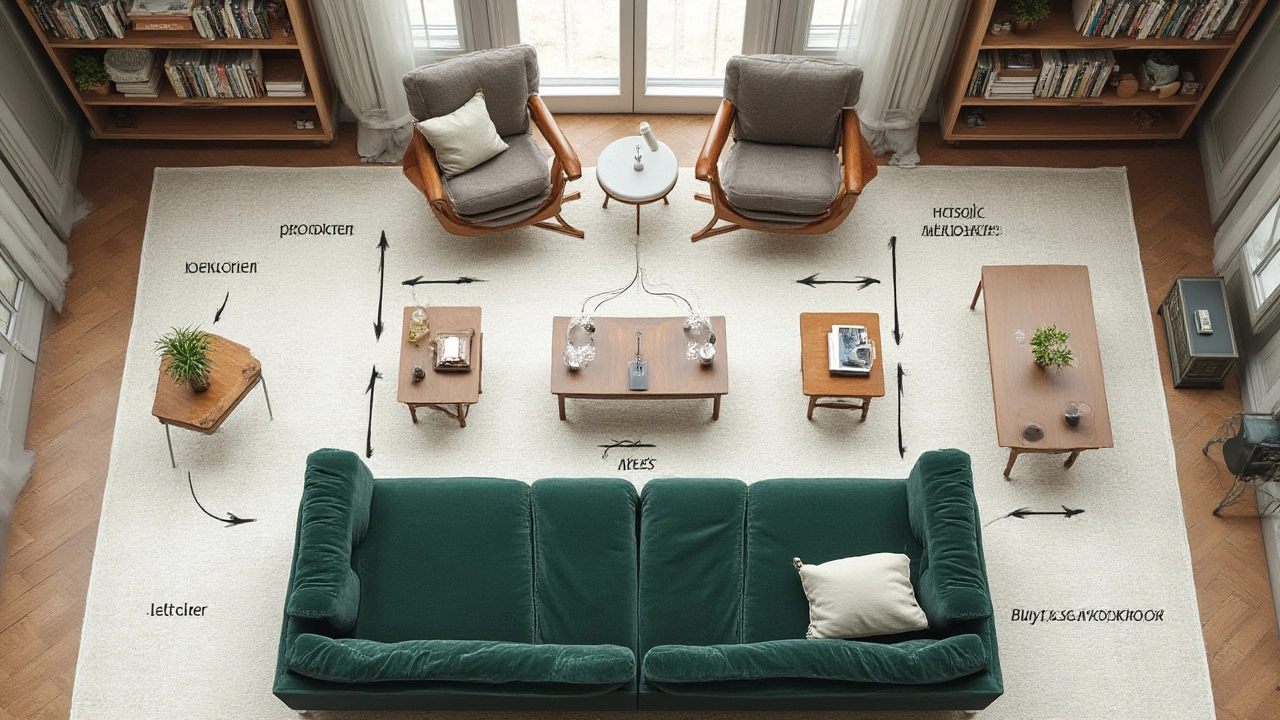
Making Space Work for You: Real-World Tricks and Mindset Shifts
Let’s get real—houses aren’t showrooms. We live in them, and our living rooms see all kinds of action: movie nights, work-from-home, playdates, weird family traditions. The best coffee table isn’t just the right size. It’s about how you use your space day-to-day.
If your living room is long and skinny, rectangular coffee tables let you fill the space without crowding walkways. For square or small rooms, a round table lets more people shuffle around, and you won’t be snagging knees on pointy corners. And if you host a lot, think modular. A set of smaller tables or cubes can work together or break up for extra surfaces as needed. It’s the same reason every cool café has moveable tables—they know life isn’t static.
Height becomes extra important if you use your living room for work, crafts, or as a homework zone. A standard table won’t cut it if you’re hunched for hours. Consider an adjustable coffee table—yes, they exist!—that pops up to laptop height when you need it and drops back down for lazy Sundays.
Another pro trick: be honest about the stuff you accumulate. If your coffee table is always buried under remotes, mugs, or piles of magazines, pick one with drawers or built-in storage—but don’t let it become a dumping ground. Clutter kills the vibe and makes your living room feel smaller, no matter how perfect your measurements are.
Don’t underestimate the impact of the coffee table size on your living room’s flow and feel. I read that in 2024, the number-one regret homeowners had about recent furniture purchases was “choosing the wrong size.” It’s not just about looks; it’s about how you move and live. Even in open concept houses, anchoring the space with right-size pieces can change how the whole place feels.
One last bit, because Lucy swears by it: change is easy if you keep things simple. Pick a table that’s flexible, light enough to move but sturdy enough for daily life. For special occasions, we swap in a narrow bench as a “coffee table” when we need more surface area, then move it back against the wall for everyday.
So, don’t treat your coffee table like décor. Treat it like your everyday ally—sized for real people and real life. Measure, test, and break the rules when you have to—after all, it’s your living room, not a furniture catalog.
